|
1938 - The London University Air Squadron
Since the reorganisation of the RAF into Fighter, Bomber, Coastal and Training Commands in 1936, the service had expanded so rapidly that pressure began to bear on the civilian support organisations, particularly flying training establishments. The situation in Europe continued to deteriorate and the need for trained pilots became a national priority. As a result, civilian flying schools found themselves receiving increasingly large contracts from the Air Ministry to provide training services while the RAF units struggled to keep pace with the expansion. One of these was Airwork, originally founded in 1928 at Heston by Nigel Norman, the designer of many airfield buildings, and Alan Muntz, along with chief pilot Captain Valentine Baker to provide flying training and other aviation services. Baker was to teach many notable pilots to fly, including Amy Johnson, the Duke of Kent and Lord Londonderry of the Air Ministry. Airwork grew rapidly as a flying school and soon ran out of space at Heston, moving their first aircraft to Denham in 1935 as part of a company expansion which included moving their headquarters to Gatwick. To give an impression of the size and range of Airwork’s activities, during this time they also assisted in the foundation of the national airlines of Egypt, India and Rhodesia. Valentine Baker was to leave Airwork, joining with his friend James Martin to found the Martin-Baker Aircraft Company at Denham, of which more later.
|
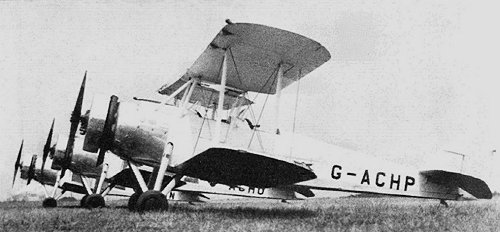
Three Airwork Avro Club Cadets at Heston. These aircraft began to be based at Denham in 1938 as Airwork expanded their training services for the RAF.
|
For Airwork, the change to an official role in training pilots for the RAF began in 1936 with the establishment of the first of six Elementary and Reserve Flying Training Schools the company was to found and run throughout and indeed beyond the Second World War. This is a subject we will return to as a part of one of their schools was to be resident at Denham during the war. Because of the now official nature of the flying training required at Denham, Myles decided that the airfield should become licenced to formalise the legal status of the aerodrome, especially in terms of insurance. This was applied for, the Aerodrome Licence being granted on 19 May, Denham becoming the first licenced aerodrome in Buckinghamshire as a result. This was a timely decision as both Airwork and the Civil Air Guard were then able to apply for official training status at Denham, the Civil Air Guard being particularly short of available airfields. Both of these organisations approached Myles Bickerton in order to establish official bases at Denham in October, both bringing more aircraft to Denham later in November. Interestingly, the secretary of the Civil Air Guard was John Adrian Chamier, later Air Commodore Sir John, who was also the secretary of the Air League of the British Empire and would become one of the founders of the Air Training Corps, initially called the Air Defence Cadet Corps, also in 1938.
|
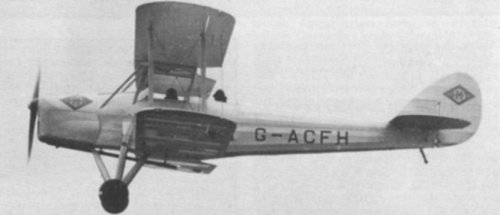
The Civil Air Guard also used the Avro Club Cadet, this one fitted with the Gipsy engine.
|
|
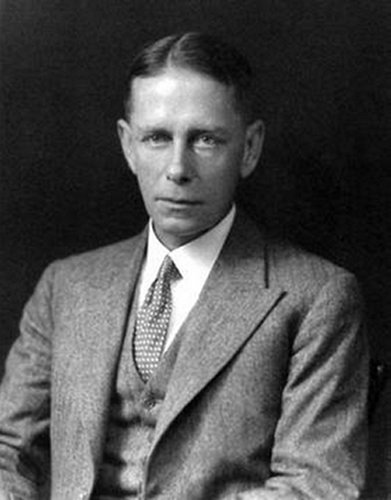
Secretary of the Civil Air Guard was John Adrian Chamier, later one of the founders of the Air Training Corps.
|
|
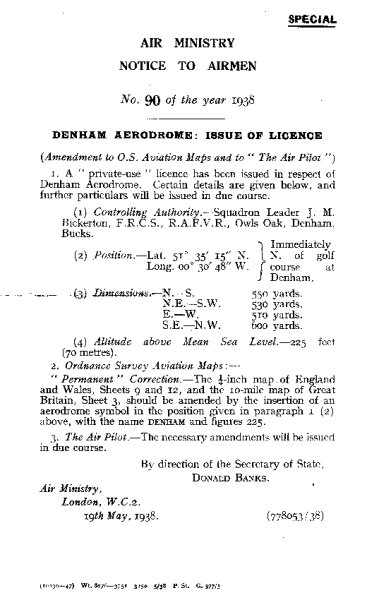
The NOTAM declaring the issuance of the Denham Aerodrome licence on 19 May 1938.
|
Myles also decided that a larger fuel facility was required at Denham to maintain supplies to the increased number of aircraft. On 29 June he applied for planning permission to build a much larger underground fuel farm consisting of several tanks, which was granted later in the year. Before the aerodrome licence was granted, the RAF had been increasing their use of Denham during 1938, particularly aircraft based at Northolt. The fact that Myles had become an honorary member of the Officer’s Mess at Northolt after his enlistment in the RAF Volunteer Reserve the previous year helped to foster a close and amicable relationship between the two airfields. Students and instructors from the Universities of London Air Squadron with their Hawker Hart Trainers were regular visitors, especially at weekends. The Universities of London Air Squadron had been formed in September 1935 with its headquarters in Exhibition Road, South Kensington, where it still resides to this day. The Adjutant of the squadron between 1937 and 1939 was John Grandy, who would later become the Chief of the Air Staff in 1967.
|
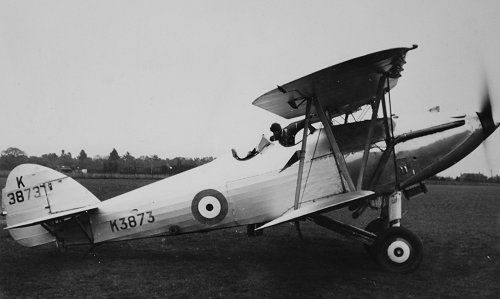
The London Universities Air Squadron was equipped with the two seat Hawker Hart trainer, the dual control version of the light bomber.
|
|
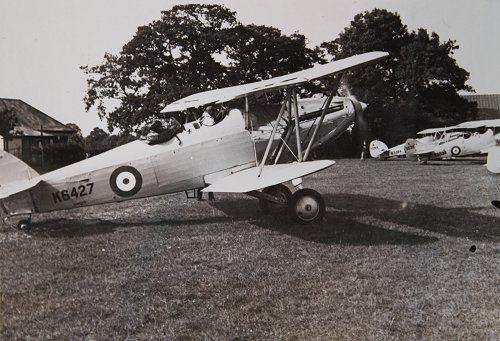
The Hawker Hart Trainers of the ULAS were regular visitors to Denham, especially at weekends, to practice landing away from their home airfield.
|
Some very large aircraft also began to arrive at Denham, including the new monoplane Handley Page HP.51 Harrow bomber transports, an aircraft that had only entered service the previous year. The use of such a large aircraft on a relatively small airfield may seem incongruous, but there was a serious reason for the Harrow’s appearance at Denham. It was determined that RAF Northolt may be the subject of concerted attack and may become unusable. Northolt was one of the airfields through which the Royal Family and Government were to be evacuated in the event of large scale air attacks on London or an invasion of Britain. Consequently, the Harrows of 37 Squadron from RAF Feltwell had visited Denham to see if the airfield could be used for such a purpose in an emergency.
|
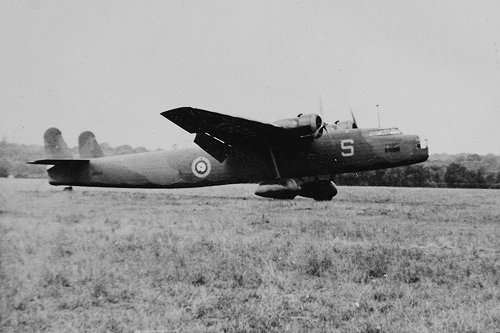
Handley Page HP.51 Harrow K6946 was a 37 Squadron aircraft which visited Denham to ascertain its suitability for large transport aircraft. This aircraft was to serve with three other RAF bombing and training units before being lost in an air accident in February 1943.
|
Interestingly, the increased RAF use of the airfield led to the first noise complaint received at Denham on April 19, from Bayley Hill. Since this complaint was specifically about RAF aircraft, Myles passed it on to the Officer Commanding RAF Northolt, who at the time was Group Captain, later Air Vice Marshal, Augustus Henry Orlebar. Orlebar had served in the Army at Gallipoli during the First World War before joining the RFC and later the RAF. He became a test pilot at the Aircraft and Armament Experimental Establishment (A&AEE) at Martlesham Heath after the war, experience that was to serve him well in his career. From 1929 to 1931 he had been the commander of the High Speed Flight, the RAF unit tasked with winning the Schneider Trophy, an international race for seaplanes and had set the world air speed record of 357.7 mph in a Supermarine S.6 in 1929. As the OC of RAF Northolt, his reply to the noise complaint is a superb example of the art of diplomacy, taking the time to explain that the RAF was using the aerodrome to prepare for conflict. He told Myles that at that time, despite the war clouds gathering over Europe, Northolt was receiving no less than 19 noise complaints a day!
|

A H Orlebar, fourth from right, then a Squadron Leader and Commander of the RAF's High Speed Flight in 1931. By 1938 he was a Group Captain and the Officer Commanding RAF Northolt.
|
Myles was becoming increasing concerned about the future development of the area around Denham and the increasing pressure on rural land around London. He invited the whole of the London Green Belt Committee to visit the aerodrome on 8 September 1938, arranging for many of them to be taken flying to allow them to see the beautiful countryside around South Buckinghamshire as well as the badly planned urban sprawl that was eating into the rural areas and the need to expand the green belt. Alongside the civil aircraft, three RAF Hawker Fury fighters and Hart trainers came across from RAF Northolt to greet the committee. Myles asked the committee directly if they had any objections to the aerodrome at Denham, to which the answer was that they did not.
|
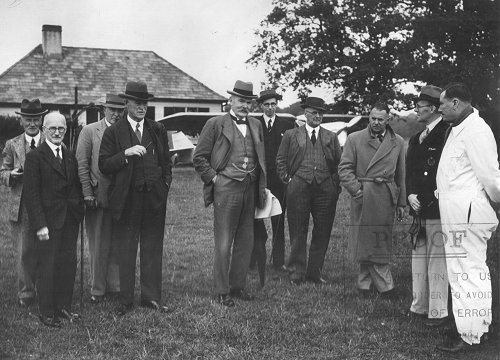
The London Green Belt Committee visited Denham aerodrome on 8 September 1938. Myles Bickerton is second from right.
|
|
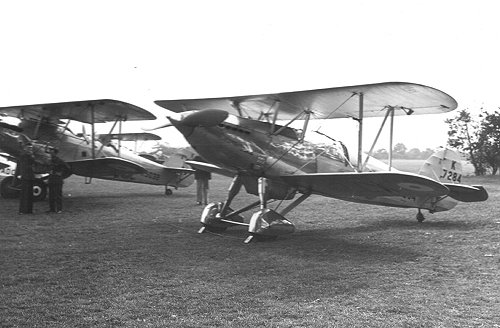
The RAF also greeted the London Green Belt Committee, bringing a variety of aircraft including this Hawker Fury II fighter.
|
Aside from the military visitors, the number of civil types using the airfield also increased, with some unusual visitors operating from the aerodrome throughout the year. This was to increase still further the following year, and would include a clandestine photographic unit, of which more in the next instalment.
|
|

